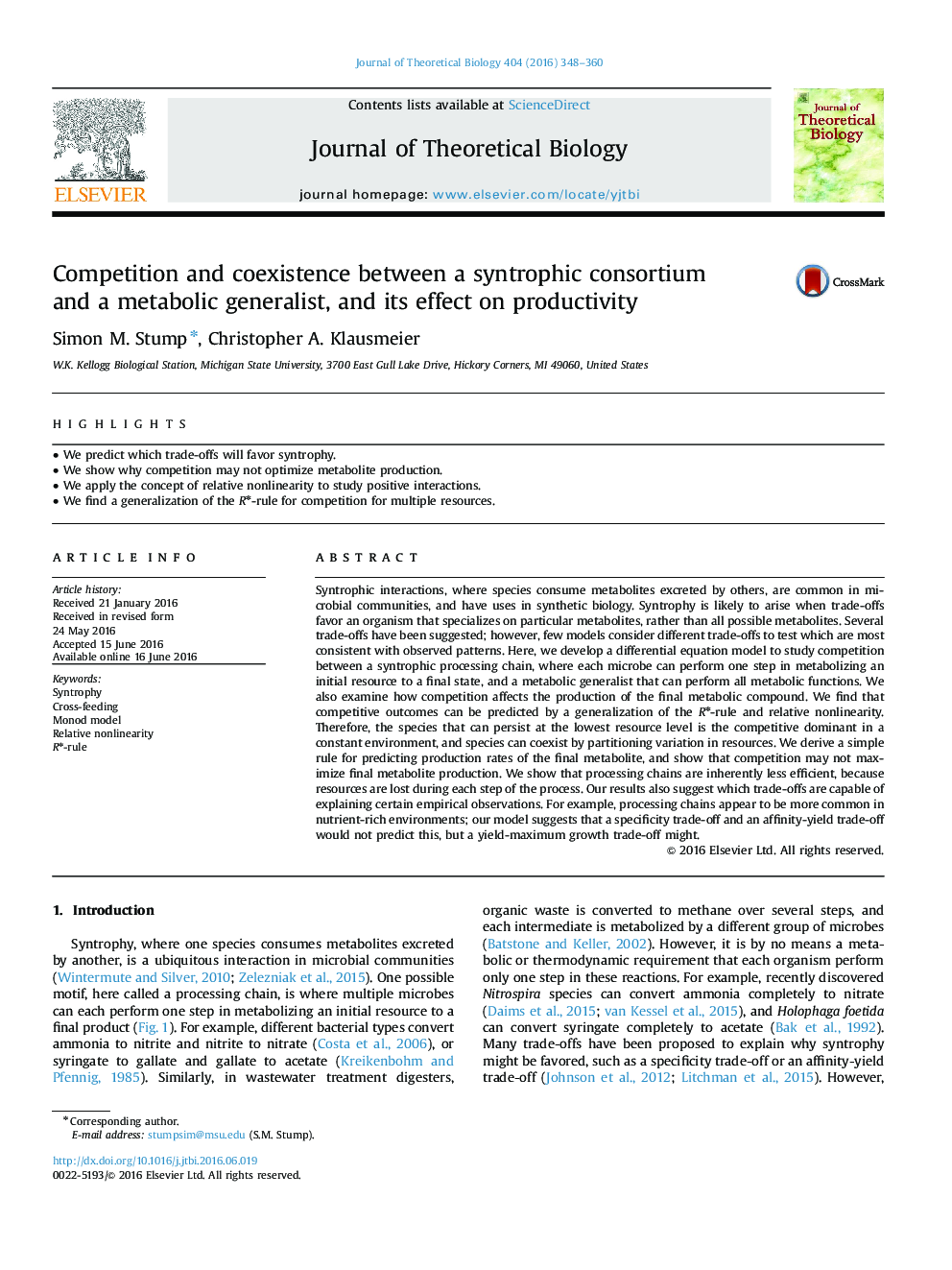| کد مقاله | کد نشریه | سال انتشار | مقاله انگلیسی | نسخه تمام متن |
|---|---|---|---|---|
| 6369062 | 1623806 | 2016 | 13 صفحه PDF | دانلود رایگان |
عنوان انگلیسی مقاله ISI
Competition and coexistence between a syntrophic consortium and a metabolic generalist, and its effect on productivity
ترجمه فارسی عنوان
مسابقه و همزیستی بین یک کنسرسیوم همجنسگرا و متخصص عمومی و تاثیر آن بر بهره وری
دانلود مقاله + سفارش ترجمه
دانلود مقاله ISI انگلیسی
رایگان برای ایرانیان
کلمات کلیدی
موضوعات مرتبط
علوم زیستی و بیوفناوری
علوم کشاورزی و بیولوژیک
علوم کشاورزی و بیولوژیک (عمومی)
چکیده انگلیسی
Syntrophic interactions, where species consume metabolites excreted by others, are common in microbial communities, and have uses in synthetic biology. Syntrophy is likely to arise when trade-offs favor an organism that specializes on particular metabolites, rather than all possible metabolites. Several trade-offs have been suggested; however, few models consider different trade-offs to test which are most consistent with observed patterns. Here, we develop a differential equation model to study competition between a syntrophic processing chain, where each microbe can perform one step in metabolizing an initial resource to a final state, and a metabolic generalist that can perform all metabolic functions. We also examine how competition affects the production of the final metabolic compound. We find that competitive outcomes can be predicted by a generalization of the Râ-rule and relative nonlinearity. Therefore, the species that can persist at the lowest resource level is the competitive dominant in a constant environment, and species can coexist by partitioning variation in resources. We derive a simple rule for predicting production rates of the final metabolite, and show that competition may not maximize final metabolite production. We show that processing chains are inherently less efficient, because resources are lost during each step of the process. Our results also suggest which trade-offs are capable of explaining certain empirical observations. For example, processing chains appear to be more common in nutrient-rich environments; our model suggests that a specificity trade-off and an affinity-yield trade-off would not predict this, but a yield-maximum growth trade-off might.
ناشر
Database: Elsevier - ScienceDirect (ساینس دایرکت)
Journal: Journal of Theoretical Biology - Volume 404, 7 September 2016, Pages 348-360
Journal: Journal of Theoretical Biology - Volume 404, 7 September 2016, Pages 348-360
نویسندگان
Simon M. Stump, Christopher A. Klausmeier,
